For many who are involved in Western Martial Arts (WMA), the only goal of practicing historical swordsmanship is to come as close as possible to developing real martial skill in the use of period weapons. Members of The Order of Lepanto also share this goal, but not as a means unto itself: it is a path to enhancing your faith life, preparing for spiritual warfare, and guides you in living out your vocation.
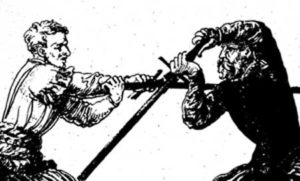 Unlike sixteenth century swordsmen, today’s student of the sword will, most likely, never have the opportunity to put his skill to the ultimate physical test. Even so, we want to develop true martial skill in the art. By then translating the lessons to our spiritual life, we will be more prepared for the real-life tests our faith will have to endure. So the approach we have developed at the Order is true to martial skills, martial heritage, and orthodox Catholic teaching. It is certainly one of the most complex, and it offers something more than what is generally available in Western swordsmanship. Let’s look at what the Order of Lepanto’s method of teaching historical swordsmanship and spiritual growth is all about.
Unlike sixteenth century swordsmen, today’s student of the sword will, most likely, never have the opportunity to put his skill to the ultimate physical test. Even so, we want to develop true martial skill in the art. By then translating the lessons to our spiritual life, we will be more prepared for the real-life tests our faith will have to endure. So the approach we have developed at the Order is true to martial skills, martial heritage, and orthodox Catholic teaching. It is certainly one of the most complex, and it offers something more than what is generally available in Western swordsmanship. Let’s look at what the Order of Lepanto’s method of teaching historical swordsmanship and spiritual growth is all about.
What’s the point?
If you’re serious about learning swordsmanship, then the measure of any system of study is the quality of the education that results. In other words, you expect a working knowledge of how to fight effectively with swords. You also want to acquire the basics within a reasonable amount of time – without the “wax on, wax off” routines that tend to keep beginners from quickly advancing. Ultimately, the system should produce a mature, competent swordsman – a swordsman capable of using real weapons in actual combat.
The farther a system gets from the reality of combat, the less useful it becomes to the student who wants true martial skill. Realistically, all systems involve a certain amount of “distance from combat reality. Simulations are used as an alternative to real fights. Safe sparring systems must be created to meet the demands of modern studies. A reasonable gage of an effective system is to see how closely its sparring system resembles the dynamics of real weapons use. This is an area where The Order of Lepanto and one other group stand out. Our sparring systems are merely a means to an end, not an end in themselves. We do not try to achieve skill at “sparring.” Rather, a number of sparring techniques are used to develop skill at fighting. You can judge the value of a sparring system by measuring how well true fighting principles work in the sparring environment. Ideally, the system should allow you to do what works without letting you get away with what wouldn’t. Target areas and sparring weapon construction are two factors which will figure in this appraisal.
If you’re serious about growing in your faith, then we would measure that system by a different standard: are you becoming more patient, are you learning to love people who are hard to love, are 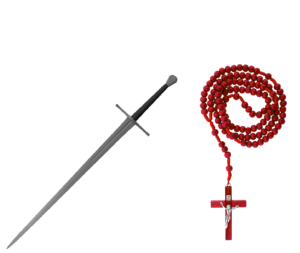 you increasing your knowledge of the faith. Many people today have been left with a teenage understanding of the faith because that is where the traditional religious education program stopped. The Order of Lepanto aims to build an adult understanding of your catholic faith and help you to grow in that faith.
you increasing your knowledge of the faith. Many people today have been left with a teenage understanding of the faith because that is where the traditional religious education program stopped. The Order of Lepanto aims to build an adult understanding of your catholic faith and help you to grow in that faith.
Learning a fighting skill, like WMA, is not an invitation to random violence, as some might suggest. Rather, it is learning to discipline your body and mind to achieve a difficult goal. The building of courage, strength, decisiveness, and confidence are the fruits of the martial arts portion of The Order of Lepanto, while finding out how God wants those skills directed and used are the fruits of the spiritual component of our program. Pursuing both the physical and spiritual with equal gusto are necessary to
Determining the Focal Point
Before proceeding, let’s narrow the focus a bit. The only way to evaluate any training system properly is to first grasp its intended role in the overall goal of a program. Developing martial skill and building a healthy, Catholic faith life is the goal of our system. There are no contests or competitions. Sparring itself provides a workshop in which members can safely practice the martial skills that they’ve learned. Our faith studies then go on to provide a framework to relate that martial skill to the realities of spiritual life for the Church Militant. Comparing what The Order of Lepanto does to what a number of non-martial groups are doing with swords will help bring this point into focus.
First, we will look at sport fencing. In spite of its ancestry, modern fencing is not meant to transmit the art of historical swordsmanship. The foil, epee and saber are no longer stand-ins for weapons but ‘weapons’ themselves. In sport fencing, the value of a technique is not its lethality but its ability to score, and the attitude of the modern fencer is competitive rather than martial (a trend that can be seen in some Eastern martial arts, too). It must be said that modern fencing lays no claims to teach an historical system of swordsmanship – it’s an evolving sport where new innovation takes fencers towards the sport aspect and further from its roots.
However, things you learn from sport fencing instruction can be useful in studying historical swordsmanship. Familiarity with fencing terminology is a plus and practicing fencing is a better preparation for a real sword fight than no practice at all. But the purpose of fencing is not the study of historical swordsmanship, so the merit of the sport has little impact on our present evaluation.
A sub-culture has emerged in the fencing community which is focused on the teaching of eighteenth and nineteenth century swordsmanship. Classical fencing asks the question, “What if our swords were sharp?” Techniques and thinking of the modern fencer are removed, and the classical fencer returns to a more martial use of the dueling epee and the smallsword.
A second practice we will review is the fighting done in the Society for Creative Anachronism (SCA), which they classify as “heavy” and “light”. While these forms are practiced as a kind of competitive sport by many, and as a semi-martial practice by some, their intent is not to produce swordsmen skilled in the use of real weapons. As with sport fencing, there may be many benefits afforded by SCA, but these are secondary to the main purpose of the pursuit.
The question of “purpose” or intent is critical, as you can’t fault a system that doesn’t claim to teach real swordsmanship for using a sparring system that doesn’t prepare a student for the realities of combat, much as you cannot fault a secular school for failing to teach the Catholic moral standards. While many people criticize systems like that of the SCA for these reasons, we must understand that SCA combat was never intended to be a martial pursuit.
Stage combat falls into the same category. Many stage combatants use replica weapons, and they create a spectacle which looks convincing to the untrained eye. We must remember that stage combat is about creating an illusion, not a fight. In that pursuit, stage combatants often sacrifice “authenticity” for the purposes of safety or entertainment and we shouldn’t be surprised – or concerned. People study stage combat to learn how to pretend to fight, not how to do it for real.
In summary, the exclusion of these three categories is not intended to disparage their participants or discourage their pursuit. All require skilled participation and can produce impressive results. None of them claims to teach historical swordsmanship, like The Order of Lepanto and a couple of others. But unlike other martial programs, The Order of Lepanto exists not only to preserve and pass on a practical understanding of historical swordsmanship, but to also cultivate a faith life similar to the deep religious belief of the historical swordsman himself.
The obsolescence of the sword
One factor irrevocably separates anything we do today from the historical reality: the obsolescence of the sword. No matter how proficient your skill with the sword, you’ll most likely never use it in a  life or death context. Even if the nearest thing at hand when your house is broken into is your trusty longsword, the odds of your intruder also being a swordsman are slim to none.
life or death context. Even if the nearest thing at hand when your house is broken into is your trusty longsword, the odds of your intruder also being a swordsman are slim to none.
Because people no longer use swords for real anymore, there is no common knowledge to draw upon in the study of swordsmanship. Nowadays we use guns, and even people with no formal firearms training know enough to operate the weapon. The same was most likely true in the fifteenth century with swords. The process of learning swordsmanship without that common knowledge means not just starting from square one, but moving back to square zero. With historical accuracy as our goal, we must unlearn the things we have learned from TV, movies, fencing, SCA and Eastern martial arts.
To study historical swordsmanship, we have to focus on learning the real techniques preserved in the historical manuals, which reveal themselves through training. And since we’ll never have the chance to try them in combat, we need an effective method of practice and sparring that checks the effectiveness of our technique against a determined opponent.
The need for safety
That’s where safety rears its ugly head. The only way to be confident that a technique works is to use it effectively against a determined, skilled opponent in a life or death struggle. When you try to simulate this reality as closely as possible, you’re essentially weighing safety in one hand and realism in the other. You’ve got to strike a balance as far in the favor of realism as you can without sacrificing safety.
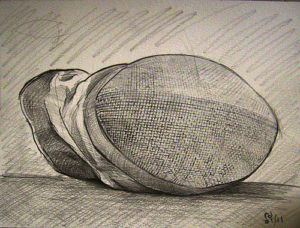
If you begin with real combat as your “ideal,” the first obvious safety measure is to use blunted weapons. The next measure is to use both headgear (fencing mask) and gloves – though there is precedent for “scholar’s privilege” which is an agreement not to thrust to the head, The Order of Lepanto requires both men to have achieved Knight Scholasticus ranking before it can be invoked. But a blunted weapon isn’t necessarily a safe one, which means that participants must also exercise proper control. Strikes must be carried out with enough speed to be effective in a real confrontation and yet contact must also be controlled enough to keep your partner safe.
Simulating the sword
In the medieval and Renaissance period, swords were not mass-produced to some pre-determined standard. Looking back, it is impossible to define the specifications of a longsword versus a cut-and-thrust sword beyond generalities. Therefore, we cannot say for certain that a specific sword accurately simulates the handling of all swords of a similar type.
One of the key issues is that virtually no modern maker has their hand-forged pieces tested for durability in warding off the full force blows of other sharp blades, nor do they go around hitting soft and hard armors full force. So much work and effort has gone into their pieces that they do not want to see them damaged. Further, customers who have spent a lot of money are not about to damage them doing the same either. Most every maker and every consumer does minimal work to evaluate a blade to the point of destruction. They then base their future impressions of other swords upon that small experience.
Another problem is that every sword can be unique. Even ones that match the same general geometry and form can vary considerably. When it comes to replicas, unfortunately, there are just so many different elements to miss and crucial factors to get wrong that the bad samples seem to outnumber the good ones by a good bit. Just getting the general shape and weight correct, then using quality steel that’s been properly tempered isn’t enough.
When you pick up most any sword, you can make an instant decision as to whether or not it “feels” good. However, without manipulating that sword with proper motion and energy, this is a very shallow assessment. There is a combination of factors that go into making a sword really stand out as a real weapon. While these are not evident through holding a piece in your hand or moving it through empty air, they become obvious it’s wielded with the requisite force and energy needed to strike effective blows against a test target combined with practice in warding off forceful strikes. This is where you see whether a weapon holds up and how well it maneuvers for whatever combat actions it was originally designed.
Nevertheless, we know from other examples that simulation can be a valid form of training – police live-fire combat ranges and pilot training programs make similar trade-offs without losing their effectiveness as tools. As long as there is an awareness of the nature of the simulation, and the aspects of combat that the model doesn’t accurately portray, the use of simulation in training is a plus.
Two Three-Legged Stools
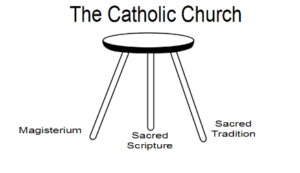 Ironically enough, fighting it out with the real weapons is the most ineffective method of training of all, since only one participant gets the opportunity to learn from his mistakes. To learn historical swordsmanship more effectively, we need a system that uses a “triangulating” approach – combining different aspects into a cohesive system of the sword and faith. Much like the three-legged stool of the Church – Sacred Scripture, Sacred Tradition, and the Magisterium – without which the faith cannot stand, the studies of the Order of Lepanto are three-legged as well.
Ironically enough, fighting it out with the real weapons is the most ineffective method of training of all, since only one participant gets the opportunity to learn from his mistakes. To learn historical swordsmanship more effectively, we need a system that uses a “triangulating” approach – combining different aspects into a cohesive system of the sword and faith. Much like the three-legged stool of the Church – Sacred Scripture, Sacred Tradition, and the Magisterium – without which the faith cannot stand, the studies of the Order of Lepanto are three-legged as well.
The first leg of our training is structured drills, undertaken with either a wooden “waster” or a blunted steel. These weapons have the weight and appearance of the real thing, and they have some of the same handling characteristics, such as a tapering blade and a discernible edge. They teach precision and finesse. We review drawings and descriptions of the actions in historical documents and then work to understand the motion and dynamics being described. This first takes places at slow speed, before building up to a medium pace, with the overall intent of creating muscle memory of the action so that it can be employed with little thought. Drills in this category include fuhlen (or feeling), where the practitioner learns to feel his opponent’s sword and read his intent, in addition to master stances, master cuts, and counters.
Taken alone, structured drills with blunt replicas is not an effective method for learning the martial aspect of historical swordsmanship. The second leg of our stool is sparring (referred to as “free play” by some). In sparring, we look to deliver solid, forceful blows without injuring an opponent, which allows a full-body target – an essential for realistic combat training. In sparring we put the actions that are practiced in drills to use in an adversarial (yet friendly) situation. The more realistically sparring is conducted, the more it sharpens reflexes, develops perception, teaches adversarial counter-timing, explores spontaneous tactics, conveys the skill of deceiving without being deceived, and lets the student try things that end up with them either getting whacked or not, but in the process not being maimed or killed.
Our third, and final, leg is the Catholic perspective. In this area of our studies, members are actively reading period writings by saints such as Ignatius of Loyola, and looking to understand how the martial arts of that period shaped their understanding of the faith. We look to leverage our knowledge of sparring technique and weapons drills towards a deeper understanding and appreciation of spiritual warfare. Sharpened reflexes, detailed perceptions, and being able to respond spontaneously are all skills that are sharpened with martial arts and critical to the spiritual battles everyone will face. We also explore this area though prayer – our groups are required to open and close each practice in group prayer. The act of practicing martial arts servers to bring our members closer together and when combined with the positive spiritual experience shared prayer, we grow towards a closer brotherhood.
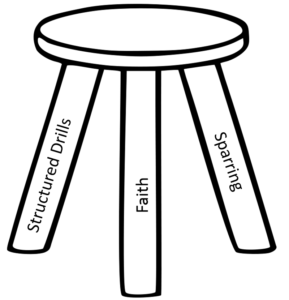
Taken as a whole, this system “triangulates” true skill by approaching practice from several different angles. When you add to this our insistence on test cutting (and thrusting) with sharp weapons, you get a fairly complete understanding of both historical swordsmanship as distinct skills and how that skill shaped the faith of the historical swordsman.
Don’t miss the focus
This is not a question of condemning fencing, the SCA, or any other group. You don’t have to look hard to see that there is a difference between what they do and what The Order of Lepanto does. The mistake people make is to look at one or two aspects of what we do and missing the bigger picture. He saw a part of the picture, but not the whole.
The thing that separates what The Order of Lepanto does from sport fencing, groups such as the SCA – and most any other program you compare it to – is that the purpose of our method is to produce skilled combatants. But there is another dimension too – because while there are other groups whose sole focus is historical combat, only The Order of Lepanto looks to grow beyond pure combat and help to build faith-filled Catholic men, who can use their martial skill in the test of spiritual warfare. In that vein, we do not sponsor competitions or anoint kings or put on performances. Our focus is narrow and concerns itself with than the effective use of historical weapons as a martial art and building a strong Catholic faith. You must not look at any aspect of the Order of Lepanto training system as a stand-alone piece or an end unto itself. As our introduction pointed out, no one involved in our group is concerned about learning to fight well with wooden swords or learning to fight well with padded swords. What we are concerned about is learning to fight well with real, sharp swords and with a real prayer life. All of these simulators are tools to help accomplish our goal, and together, they combine to offer a very effective system.
Here are The Order of Lepanto’s guidelines employed as general rules of thumb for sparring:
- Situational Awareness = Maintaining good edge alignment and targeting
- Purpose = striking with a degree of force within range to achieve actual contact; must be done in a way that has proper motion to simulate the inertia of a real blow
- Control = not hitting too hard or too fast to prevent injury, striking the selected target
- Time-on-Target = connecting with a sufficient interval of time whereby the weapon makes contact in order to simulate the energy that would have impacted or penetrated
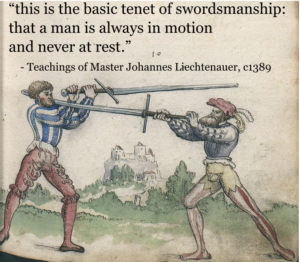 gels. The heart of spiritual combat is to overcome these temptations to sin because giving up on trying to grow your relationship with the Lord is not a viable option if heaven is your goal.
gels. The heart of spiritual combat is to overcome these temptations to sin because giving up on trying to grow your relationship with the Lord is not a viable option if heaven is your goal. A person who has a wooden sword will need to have boiled linseed oil to regularly treat the sword.
A person who has a wooden sword will need to have boiled linseed oil to regularly treat the sword. Oil to prevent rust – you can use a gun oil or a sword oil for this
Oil to prevent rust – you can use a gun oil or a sword oil for this A flat metal file with a medium grit to dress nicks in the edge
A flat metal file with a medium grit to dress nicks in the edge And a way to store the sword when not in use that will protect it from rust. I recommend using a gun sock made for rifles, they are inexpensive and the length is just right.
And a way to store the sword when not in use that will protect it from rust. I recommend using a gun sock made for rifles, they are inexpensive and the length is just right. x gloves by Magid. These gloves offer good protection to all 5 fingers, knuckles, and the back of the hand.
x gloves by Magid. These gloves offer good protection to all 5 fingers, knuckles, and the back of the hand. A set of Original M-Pact gloves from Mechanix. Good protection for 4 fingers and knuckles, okay protection on the thumb and back of hand.
A set of Original M-Pact gloves from Mechanix. Good protection for 4 fingers and knuckles, okay protection on the thumb and back of hand.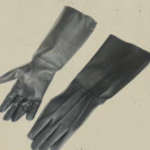 or basic leather one’s will do nicely.
or basic leather one’s will do nicely. The Spiritual Combat by Dom Lorenzo Scupoli is the book that Saint Ignatius carried with him and that he read every day.
The Spiritual Combat by Dom Lorenzo Scupoli is the book that Saint Ignatius carried with him and that he read every day.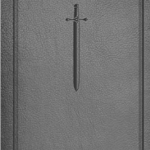 A more modern book, the Manual for Spiritual Warfare by Paul Thigpen is a wonderful companion too.
A more modern book, the Manual for Spiritual Warfare by Paul Thigpen is a wonderful companion too.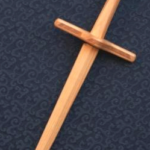 but a bladed Gauche would also have been seen.
but a bladed Gauche would also have been seen.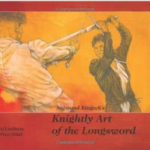 Sigmund Ringneck’s translation is a little dated, but the manual is easy to understand and gives an excellent foundational understanding of the longsword, which is the basis of all western martial arts.
Sigmund Ringneck’s translation is a little dated, but the manual is easy to understand and gives an excellent foundational understanding of the longsword, which is the basis of all western martial arts.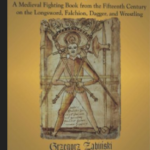 Codex Wallerstein gives another perspective on the longsword as well as adding in wrestling, dagger, and other weapons.
Codex Wallerstein gives another perspective on the longsword as well as adding in wrestling, dagger, and other weapons.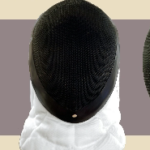 Luckily there are a couple of affordable options from Absolute Fencing and Blue Gauntlet Fencing.
Luckily there are a couple of affordable options from Absolute Fencing and Blue Gauntlet Fencing.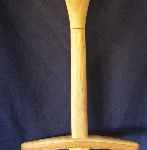
 orso Training Bag. This training tool was developed for unarmed martial arts, but it works quite nicely with a waster or a blunt steel sword.
orso Training Bag. This training tool was developed for unarmed martial arts, but it works quite nicely with a waster or a blunt steel sword.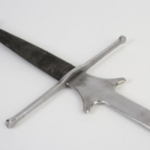 Another good choice is a Feder from Regenyei Armoury. These are good mid-tier swords.
Another good choice is a Feder from Regenyei Armoury. These are good mid-tier swords.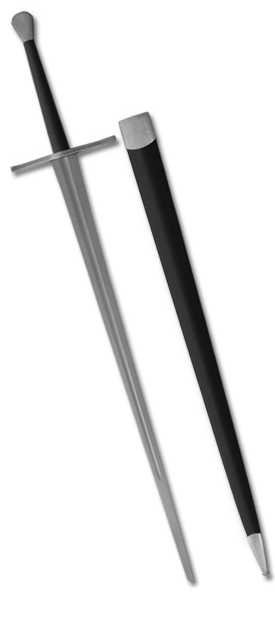 Finally, there is the Tinker-Pearce Longsword from Hanwei. It is a beginners sword with a price to match. This one won’t last as long, but it is a way to spar with a real steel sword.
Finally, there is the Tinker-Pearce Longsword from Hanwei. It is a beginners sword with a price to match. This one won’t last as long, but it is a way to spar with a real steel sword.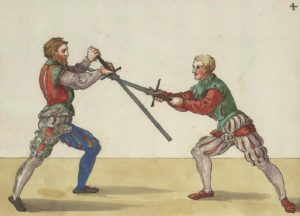
 As you are most likely aware, Lent is a liturgical season in the Catholic Church that comes before Easter. Officially, it begins on Ash Wednesday (which is March 1st this year) and ends on Holy Thursday (April 13th), lasting slightly longer than 40 days. Since the date of Easter moves based on the cycles of the moon, the dates of Lent will be different every year. The meaning of the word “Lent” is from the old English meaning length and this is, of course, an allusion to the lengthening of days during this period. As the days get longer, there is more light and less dark. Similarly we are called to grow in faith and grow the light of Christ in our lives, while reducing the darkness of sin.
As you are most likely aware, Lent is a liturgical season in the Catholic Church that comes before Easter. Officially, it begins on Ash Wednesday (which is March 1st this year) and ends on Holy Thursday (April 13th), lasting slightly longer than 40 days. Since the date of Easter moves based on the cycles of the moon, the dates of Lent will be different every year. The meaning of the word “Lent” is from the old English meaning length and this is, of course, an allusion to the lengthening of days during this period. As the days get longer, there is more light and less dark. Similarly we are called to grow in faith and grow the light of Christ in our lives, while reducing the darkness of sin. habits of eating and exercise are quite popular. However, if a person were to go to gym on try to do 90 minutes of intense exercise as a beginner, they would either injure themselves or become so sore and exhausted as to be unable (or unwilling) to come back. Think of Lenten practices as spiritual exercise. You are trying to get your mind and soul in shape. Therefore, a similar set of rules should guide you –
habits of eating and exercise are quite popular. However, if a person were to go to gym on try to do 90 minutes of intense exercise as a beginner, they would either injure themselves or become so sore and exhausted as to be unable (or unwilling) to come back. Think of Lenten practices as spiritual exercise. You are trying to get your mind and soul in shape. Therefore, a similar set of rules should guide you – As part of my studies of the martial arts of Medieval and Renaissance Europe, I specifically looked at the history of knights, especially those of the Catholic Military Orders (e.g. The Knights of Saint John/Malta/Hospitaller, Teutonic Knights, etc.). In the course of that reading, I came across an article from Patrick Meehan, published at the Medievalists.net website in 2014. The author writes about the history of knights and how the actions of these historical figures runs the gamut from violent and destructive to the courtesies of courtly life. The author goes on to discuss the happenings in the lives of 3 different knights – an anonymous knight in the Teutonic Knights, Ulrich von Lichtenstein, and Jӧrg von Ehingen. The lives of these three men were distinctly different and spanned 200 years of history, but there was a common thread that linked them together and linked them to us – and the key to understanding that linkage lies in the Theology of the Body.
As part of my studies of the martial arts of Medieval and Renaissance Europe, I specifically looked at the history of knights, especially those of the Catholic Military Orders (e.g. The Knights of Saint John/Malta/Hospitaller, Teutonic Knights, etc.). In the course of that reading, I came across an article from Patrick Meehan, published at the Medievalists.net website in 2014. The author writes about the history of knights and how the actions of these historical figures runs the gamut from violent and destructive to the courtesies of courtly life. The author goes on to discuss the happenings in the lives of 3 different knights – an anonymous knight in the Teutonic Knights, Ulrich von Lichtenstein, and Jӧrg von Ehingen. The lives of these three men were distinctly different and spanned 200 years of history, but there was a common thread that linked them together and linked them to us – and the key to understanding that linkage lies in the Theology of the Body. Matrimony. God’s love has four components – it must be free, total, faithful, and fruitful. So to, should the love between spouses exhibit these four elements and marriages suffer when they are absent. First is freedom – we must be free to marry our spouse. Which means not only that we are not married to another, but also that we are not forcing our spouse to do something and we are able to forsake relations with all others. Next is total, the love must be total and one spouse should not say “I give you everything, except…” Totality also includes forever, which is why a prenuptial agreement is an impediment to a sacramental marriage as it presupposes failure and you have not committed to give your spouse your entire future. Faithfulness is third on the list and it should be clear, at least on the physical level, of the importance of faithfulness. This also refers to faithfulness in word and in thought – engaging in fantasies about others is unfaithful too. And finally fruitful, which describes how physical relations between spouses need to be open to life, though not necessarily timed to generate a life. This vision of spousal love is a total gift of self to the vocation of marriage – our work, our play, and our faith life are centered on our spouse and any children that arise from this union.
Matrimony. God’s love has four components – it must be free, total, faithful, and fruitful. So to, should the love between spouses exhibit these four elements and marriages suffer when they are absent. First is freedom – we must be free to marry our spouse. Which means not only that we are not married to another, but also that we are not forcing our spouse to do something and we are able to forsake relations with all others. Next is total, the love must be total and one spouse should not say “I give you everything, except…” Totality also includes forever, which is why a prenuptial agreement is an impediment to a sacramental marriage as it presupposes failure and you have not committed to give your spouse your entire future. Faithfulness is third on the list and it should be clear, at least on the physical level, of the importance of faithfulness. This also refers to faithfulness in word and in thought – engaging in fantasies about others is unfaithful too. And finally fruitful, which describes how physical relations between spouses need to be open to life, though not necessarily timed to generate a life. This vision of spousal love is a total gift of self to the vocation of marriage – our work, our play, and our faith life are centered on our spouse and any children that arise from this union.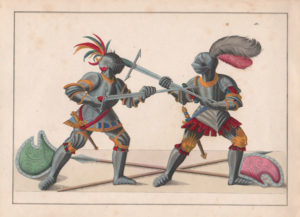 agree to serve, but they had to be free of impediments that might divide their loyalty (such as a wife and family for the religious Knights). There was a totality of service, especially in the military orders of the Church, whereby knights gave their money to the Order and turned over any property to the Order. As an example of their faithfulness Knights were expected, and often did, sacrifice their bodies in service to the leader or kingdom they swore fealty to. The fruitfulness that a Knight was called to is certainly different than that of the spousal relationship, though also of great value during this period. Knights were expected to be fruitful in their works and in the defense of the subjects of a kingdom or members of the faith (for the religious Knights). Another way that knights fulfilled their call to be fruitful, was to take on boys as pages to be trained, promoted to squires, and finally to become knights in their own right. The process lasted about 14 years and during that time these boys and young men would live with their knight instead of their family.
agree to serve, but they had to be free of impediments that might divide their loyalty (such as a wife and family for the religious Knights). There was a totality of service, especially in the military orders of the Church, whereby knights gave their money to the Order and turned over any property to the Order. As an example of their faithfulness Knights were expected, and often did, sacrifice their bodies in service to the leader or kingdom they swore fealty to. The fruitfulness that a Knight was called to is certainly different than that of the spousal relationship, though also of great value during this period. Knights were expected to be fruitful in their works and in the defense of the subjects of a kingdom or members of the faith (for the religious Knights). Another way that knights fulfilled their call to be fruitful, was to take on boys as pages to be trained, promoted to squires, and finally to become knights in their own right. The process lasted about 14 years and during that time these boys and young men would live with their knight instead of their family.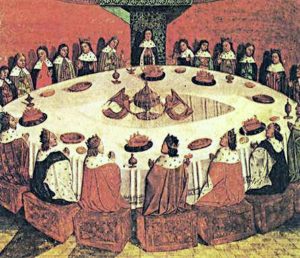
 alone to receive the Eucharist. The Art as expressed in the Renaissance source teachings, was taught with the recognition it was intended only for those who were deemed worthy, those trustworthy to receive it. Lest you think faith is much different, Paul writes in 1 Corinthians 3:13, “Every man’s work shall be manifest; for the day of the Lord shall declare it, because it shall be revealed in fire; and the fire shall try every man’s work, of what sort it is.” Our work in pursuit of the faith will be judged and found either worthy or not – we are called to works through our love and faith to prove ourselves just as the Renaissance martial artists judged each other as worthy in a human context. Exactly how much these practices were followed in historical reality, we can never really know. But in striving for best in our faith journey and our martial skills, we teach and demonstrate to others a desire to learn and to strive for mastery of the craft and the faith.
alone to receive the Eucharist. The Art as expressed in the Renaissance source teachings, was taught with the recognition it was intended only for those who were deemed worthy, those trustworthy to receive it. Lest you think faith is much different, Paul writes in 1 Corinthians 3:13, “Every man’s work shall be manifest; for the day of the Lord shall declare it, because it shall be revealed in fire; and the fire shall try every man’s work, of what sort it is.” Our work in pursuit of the faith will be judged and found either worthy or not – we are called to works through our love and faith to prove ourselves just as the Renaissance martial artists judged each other as worthy in a human context. Exactly how much these practices were followed in historical reality, we can never really know. But in striving for best in our faith journey and our martial skills, we teach and demonstrate to others a desire to learn and to strive for mastery of the craft and the faith.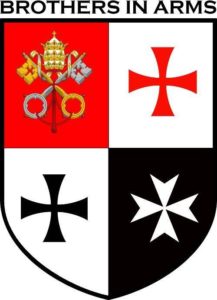
 Unlike sixteenth century swordsmen, today’s student of the sword will, most likely, never have the opportunity to put his skill to the ultimate physical test. Even so, we want to develop true martial skill in the art. By then translating the lessons to our spiritual life, we will be more prepared for the real-life tests our faith will have to endure. So the approach we have developed at the Order is true to martial skills, martial heritage, and orthodox Catholic teaching. It is certainly one of the most complex, and it offers something more than what is generally available in Western swordsmanship. Let’s look at what the Order of Lepanto’s method of teaching historical swordsmanship and spiritual growth is all about.
Unlike sixteenth century swordsmen, today’s student of the sword will, most likely, never have the opportunity to put his skill to the ultimate physical test. Even so, we want to develop true martial skill in the art. By then translating the lessons to our spiritual life, we will be more prepared for the real-life tests our faith will have to endure. So the approach we have developed at the Order is true to martial skills, martial heritage, and orthodox Catholic teaching. It is certainly one of the most complex, and it offers something more than what is generally available in Western swordsmanship. Let’s look at what the Order of Lepanto’s method of teaching historical swordsmanship and spiritual growth is all about. you increasing your knowledge of the faith. Many people today have been left with a teenage understanding of the faith because that is where the traditional religious education program stopped. The Order of Lepanto aims to build an adult understanding of your catholic faith and help you to grow in that faith.
you increasing your knowledge of the faith. Many people today have been left with a teenage understanding of the faith because that is where the traditional religious education program stopped. The Order of Lepanto aims to build an adult understanding of your catholic faith and help you to grow in that faith. life or death context. Even if the nearest thing at hand when your house is broken into is your trusty longsword, the odds of your intruder also being a swordsman are slim to none.
life or death context. Even if the nearest thing at hand when your house is broken into is your trusty longsword, the odds of your intruder also being a swordsman are slim to none.
 Ironically enough, fighting it out with the real weapons is the most ineffective method of training of all, since only one participant gets the opportunity to learn from his mistakes. To learn historical swordsmanship more effectively, we need a system that uses a “triangulating” approach – combining different aspects into a cohesive system of the sword and faith. Much like the three-legged stool of the Church – Sacred Scripture, Sacred Tradition, and the Magisterium – without which the faith cannot stand, the studies of the Order of Lepanto are three-legged as well.
Ironically enough, fighting it out with the real weapons is the most ineffective method of training of all, since only one participant gets the opportunity to learn from his mistakes. To learn historical swordsmanship more effectively, we need a system that uses a “triangulating” approach – combining different aspects into a cohesive system of the sword and faith. Much like the three-legged stool of the Church – Sacred Scripture, Sacred Tradition, and the Magisterium – without which the faith cannot stand, the studies of the Order of Lepanto are three-legged as well.
